Find Help
More Items From Ergsy search
-

Spinal Anaesthesia for Caesarean Section
Relevance: 100%
-

Is spinal anaesthesia safe for a Caesarean section?
Relevance: 92%
-

Can I breastfeed immediately after a Caesarean section under spinal anaesthesia?
Relevance: 77%
-

Having a Caesarean Section
Relevance: 68%
-
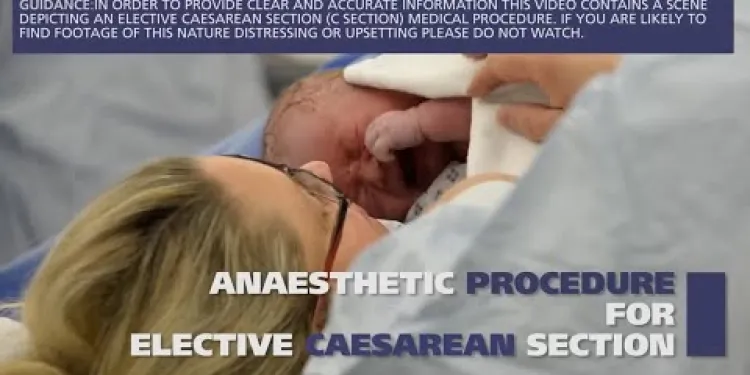
Anaesthetic procedure for elective caesarean section (C section)
Relevance: 65%
-

Planned caesarean section
Relevance: 63%
-

Having a planned caesarean section
Relevance: 62%
-
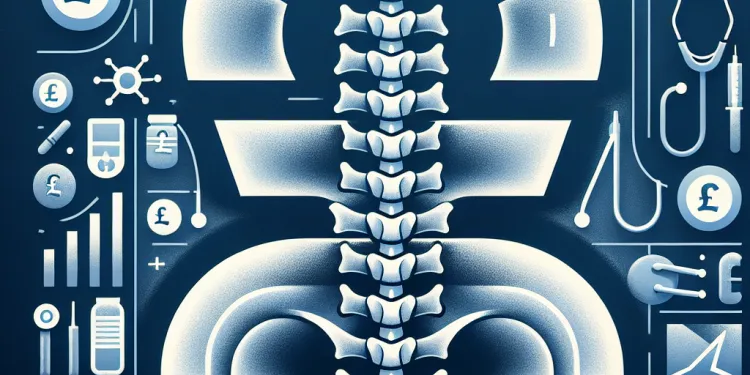
How will I be positioned for spinal anaesthesia?
Relevance: 56%
-

What is spinal anaesthesia?
Relevance: 55%
-

Can my partner be with me during the Caesarean section?
Relevance: 54%
-

How is spinal anaesthesia different from an epidural?
Relevance: 48%
-

What should I do to prepare for spinal anaesthesia?
Relevance: 47%
-

What are the common side effects of spinal anaesthesia?
Relevance: 46%
-

Your Caesarean birth
Relevance: 46%
-

What is a Caesarean birth?
Relevance: 45%
-

What should I expect after the spinal anaesthesia wears off?
Relevance: 45%
-

What are the alternatives to spinal anaesthesia for a Caesarean section?
Relevance: 44%
-

Can I have a natural birth after a Caesarean section?
Relevance: 39%
-
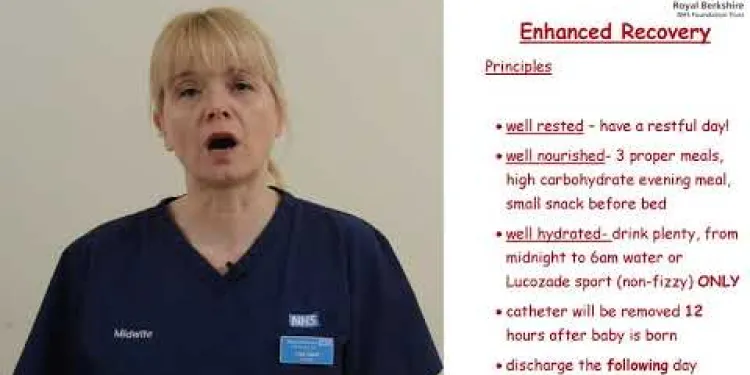
Pre operative Information for Planned Caesarean Birth
Relevance: 38%
-

What type of anaesthesia is used during hip replacement surgery?
Relevance: 32%
-

Why might a Caesarean birth be necessary?
Relevance: 29%
-

Will I be awake during a C-section?
Relevance: 27%
-

Can I breastfeed after a Caesarean birth?
Relevance: 26%
-

Does IVF require anesthesia?
Relevance: 26%
-

Can spinal anaesthesia affect my baby?
Relevance: 24%
-
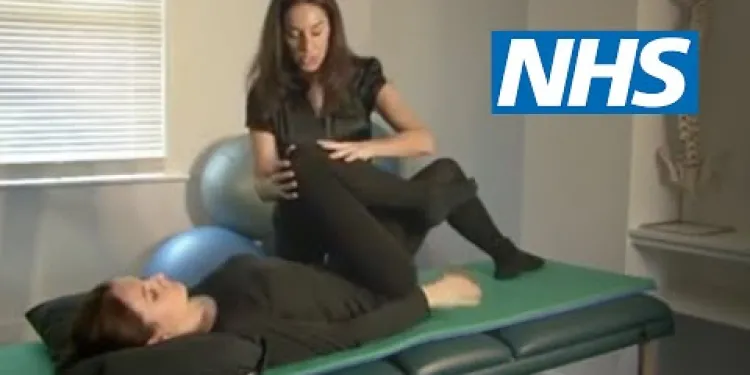
Exercises for sciatica: spinal stenosis | NHS
Relevance: 24%
-

Children Act 1989 section 20 - Legislation
Relevance: 23%
-
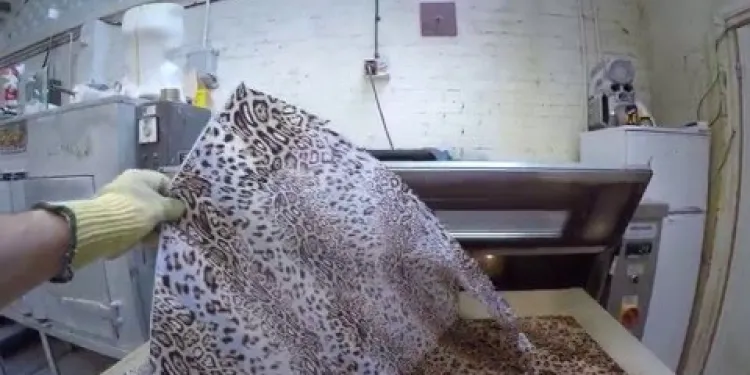
Making a spinal brace for a scoliotic patient at the RNOH
Relevance: 22%
-

How long does spinal anaesthesia last?
Relevance: 22%
-

Your anaesthetic choices for your planned hip or knee replacement surgery at the RUH.
Relevance: 19%
-

Charlie and Rupert on their journey with Spinal Muscular Atrophy and Zolgensma Gene Therapy
Relevance: 18%
-

How long does it take to recover from a Caesarean birth?
Relevance: 16%
-

Epidural for labour at North Bristol NHS Trust
Relevance: 16%
-
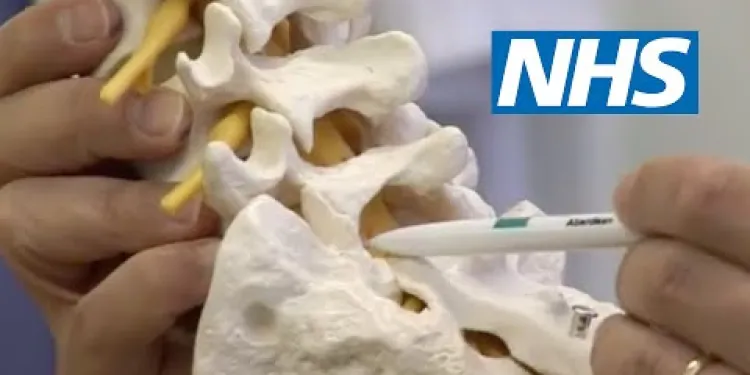
Lumbar surgery | NHS
Relevance: 16%
-

Are there any dietary restrictions before a C-section?
Relevance: 14%
-

Is a C-section a common procedure in the UK?
Relevance: 13%
-

Having an epidural in labour at St Michael's Hospital
Relevance: 12%
-

What is a lumbar puncture?
Relevance: 12%
-

Will I feel pain during the procedure?
Relevance: 12%
-

Hip replacement
Relevance: 12%
Spinal Anaesthesia for Caesarean Section
Introduction to Spinal Anaesthesia
Spinal anaesthesia is a type of regional anaesthesia frequently used for caesarean sections in the United Kingdom. This technique involves injecting local anaesthetic into the subarachnoid space, the area surrounding the spinal cord, to numb the lower part of the body. It is preferred for its rapid onset and effective pain relief while allowing the mother to be awake and interact immediately with her newborn post-delivery.Procedure for Spinal Anaesthesia
Before the procedure, the patient is typically provided with detailed information and reassured about the process. The anaesthetic is administered in a controlled, sterile environment, usually an operating theatre. The mother will be asked to either sit up or lie on her side with her knees pulled up. A small area of skin on the lower back is cleaned and numbed with a local anaesthetic. Then, a fine needle is inserted through the skin and into the subarachnoid space, where the local anaesthetic is injected.Benefits of Spinal Anaesthesia
One of the primary benefits of spinal anaesthesia for a caesarean section is its rapid onset, generally within a few minutes. It provides excellent pain relief, which can be crucial not only for the surgical procedure but also for early post-operative recovery. Additionally, since the mother remains awake, she can experience the birth of her child and bond immediately after delivery. Spinal anaesthesia also carries a lower risk of complications and side effects compared to general anaesthesia.Potential Risks and Side Effects
While spinal anaesthesia is generally safe, it’s important to be aware of potential risks and side effects. Common side effects can include a drop in blood pressure, headache, nausea, and back pain at the injection site. In rare cases, more serious complications such as infection or nerve damage can occur. It's vital for the patient to discuss any concerns with their anaesthetist beforehand.Conclusion
Spinal anaesthesia is a widely used and effective method for caesarean sections in the United Kingdom. It provides excellent pain control and allows the mother to stay awake during the birth of her baby. Although there are some risks associated with the procedure, they are generally minimal and manageable. Proper consultation and careful administration ensure a safe and positive childbirth experience.Understanding Spinal Anaesthesia for Caesarean Section
Spinal anaesthesia is a commonly used technique for caesarean sections in the United Kingdom, offering several benefits for both mother and baby. It provides effective pain relief during the procedure while allowing the mother to remain awake and alert.
What is Spinal Anaesthesia?
Spinal anaesthesia involves the injection of a local anaesthetic into the subarachnoid space in the lower back. This technique numbs the nerves around the spinal cord, providing rapid and effective pain relief for lower body surgeries, such as caesarean sections. The procedure is typically performed by an anaesthetist, who ensures the mother's comfort and safety throughout.
Advantages of Spinal Anaesthesia in Caesarean Sections
One of the main benefits of spinal anaesthesia is the rapid onset of pain relief, which typically occurs within a few minutes. This allows for a quick preparation and a timely start to the caesarean section. Additionally, spinal anaesthesia enables the mother to remain awake and experience the birth of her child while maintaining effective pain control. This method also avoids the risks associated with general anaesthesia, such as aspiration and respiratory complications.
Safety and Precautions
While spinal anaesthesia is generally safe, there are some precautions and monitoring required. The anaesthetist will assess the mother’s overall health and discuss any potential risks, such as hypotension, headaches, or allergic reactions. Continuous monitoring of the mother’s vital signs is essential to ensure any complications are promptly addressed.
Post-Procedure Care
After the procedure, the mother’s lower body sensation and movement will gradually return as the anaesthetic wears off, usually within a few hours. Pain management post-surgery is crucial, and healthcare providers will offer appropriate pain relief options. It’s important for mothers to follow post-operative care instructions to promote a smooth recovery.
Conclusion
Spinal anaesthesia for caesarean sections offers a reliable and effective method for managing pain while allowing mothers to be part of their child’s birth experience. With careful planning and monitoring, this technique provides a safe option for both mothers and their babies.
Spinal Anaesthesia for Caesarean Section
What is Spinal Anaesthesia?
Spinal anaesthesia is a way to make the lower part of the body numb. It is often used when a mother is having a caesarean section, which is a type of surgery to deliver a baby. The doctor puts medicine near the spine to stop feeling in the lower body. This helps the mum not to feel pain but stay awake to see her baby.How Spinal Anaesthesia is Done
Before starting, the doctor will explain what's going to happen. This helps make people feel calm. The anaesthesia is given in a clean and safe place like an operating room. The mum will sit up or lie on her side. Her knees will be up. First, a small part of her lower back will be cleaned and numbed. Then, a thin needle will be used to put the medicine near the spine to make the body numb.Why Spinal Anaesthesia is Good
Spinal anaesthesia works quickly, usually in a few minutes. It makes sure the mum does not feel pain during the operation. It also helps her recover fast afterward. Since she stays awake, she can see and be with her baby right away. Spinal anaesthesia has fewer risks than being put to sleep completely.Things to Know About Spinal Anaesthesia
Spinal anaesthesia is usually safe, but it can have some side effects. These might be feeling dizzy because of low blood pressure, a headache, feeling sick, or having a sore back where the medicine was given. Serious problems are rare but can include infection or nerve trouble. It's important for mums to talk to the doctor if they have any worries.Final Thoughts
Spinal anaesthesia is a common and helpful way to give birth by caesarean in the UK. It stops pain well and lets mums stay awake to welcome their new baby. While there are some risks, they are usually small and can be managed. Talking to the doctor and getting good care makes having a baby a safe and happy time. --- **Helpful Tips:** - **Visual aids:** Diagrams or videos can help explain what will happen. - **Simple Questions:** Ask simple questions to the doctor to make sure you understand. - **Support Person:** Have someone with you to help if you're worried.Understanding Spinal Anaesthesia for Caesarean Section
Spinal anaesthesia helps mothers during a caesarean section. It is used a lot in the UK. It stops pain but keeps the mother awake and aware. This is good for both the mum and the baby.
What is Spinal Anaesthesia?
Spinal anaesthesia is when a doctor puts medicine in the lower back. This medicine stops pain by numbing the spinal cord. It works quickly and is good for surgeries like caesarean sections. A special doctor called an anaesthetist will do this and make sure the mum is safe and comfortable.
Advantages of Spinal Anaesthesia in Caesarean Sections
Spinal anaesthesia works quickly to stop pain, in just a few minutes. This helps doctors start the caesarean section faster. The mum stays awake and can see her baby being born. It also avoids problems that can happen with other types of anaesthesia, like trouble breathing.
Safety and Precautions
Spinal anaesthesia is usually safe, but doctors have to be careful. The anaesthetist will check the mum’s health and talk about any risks. These risks could be low blood pressure, headaches, or allergies. The mum’s health is watched closely to catch any problems quickly.
Post-Procedure Care
After the surgery, the feeling in the mum’s legs will slowly come back in a few hours. It's important to manage pain after surgery, and doctors will help with this. Mums need to follow care instructions to heal well.
Conclusion
Spinal anaesthesia is a good way to control pain for mums having caesarean sections. It lets them enjoy the birth of their baby. With good planning and care, it is a safe choice for mums and babies.
Frequently Asked Questions
What is spinal anaesthesia?
Spinal anaesthesia is a type of regional anaesthesia involving the injection of a local anaesthetic into the subarachnoid space around the spinal cord, providing pain relief and loss of sensation in the lower half of the body.
Is spinal anaesthesia safe for a Caesarean section?
Yes, spinal anaesthesia is generally considered safe for most women undergoing Caesarean sections and is commonly used in the UK. It allows the mother to be awake and involved during the birth.
How long does spinal anaesthesia last?
The effects typically last about 1.5 to 4 hours, which is usually sufficient for a Caesarean section.
Will I feel pain during the procedure?
Spinal anaesthesia usually provides complete pain relief during the procedure, though you may still feel pressure or pulling sensations.
Can my partner be with me during the Caesarean section?
In most UK hospitals, your partner or a birth supporter can be with you during the procedure, providing you're both comfortable and there's no medical reason to prevent it.
What are the common side effects of spinal anaesthesia?
Common side effects can include low blood pressure, headache, nausea, and itching. Your healthcare team will monitor and manage these effects.
How is spinal anaesthesia different from an epidural?
While both are types of regional anaesthesia, spinal anaesthesia is injected directly into the spinal fluid for quick onset, whereas an epidural is delivered outside the dura mater and may take longer to work.
What should I do to prepare for spinal anaesthesia?
Your medical team will provide specific instructions, but generally, you should follow guidance on fasting and informing them of any medications you're taking.
How will I be positioned for spinal anaesthesia?
Typically, you'll be asked to sit up and lean forward or lie on your side in a curled position to help the anaesthetist access the space between your vertebrae.
What should I expect after the spinal anaesthesia wears off?
You'll gradually regain sensation and movement in your legs. Your healthcare team will ensure you are stable and comfortable before allowing you to move around.
Is there a risk of permanent nerve damage?
Permanent nerve damage is very rare. Most side effects are temporary and resolve without lasting issues.
Can I breastfeed immediately after a Caesarean section under spinal anaesthesia?
Yes, spinal anaesthesia does not affect your ability to breastfeed, and you can usually start as soon as you feel able and comfortable.
Will I need additional pain relief after the surgery?
Postoperative pain relief may be necessary once the effects of the spinal anaesthetic wear off. Your care team will provide appropriate medication to help manage any discomfort.
Can spinal anaesthesia affect my baby?
Spinal anaesthesia is considered safe for the baby and does not typically affect them. It allows you to be awake and interact with your newborn soon after birth.
What are the alternatives to spinal anaesthesia for a Caesarean section?
Alternatives include general anaesthesia, where you're asleep during the surgery, and epidural anaesthesia, which might be recommended based on specific health considerations.
What is spinal anaesthesia?
Spinal anaesthesia helps you not feel pain during an operation.
A doctor puts a special medicine in your back. This medicine makes your bottom half go numb.
You will stay awake during the operation, but you won't feel pain.
If you find reading hard, you can:
- Listen to someone read this to you.
- Ask someone to explain it with pictures.
Spinal anaesthesia is a special way to stop pain when doctors are doing an operation. It works by putting medicine near the spine. This medicine helps to stop feeling pain in the lower part of the body.
Is it safe to have a numbing medicine in the back for having a baby by operation?
Doctors use a special numbing medicine for moms having a baby by operation, called a Caesarean section. The mom stays awake but does not feel pain in her tummy. This numbing medicine is called spinal anaesthesia.
This is usually safe. Doctors and nurses are experts, and they take good care of the mom and baby. Having someone you trust, like a family member or friend, can be helpful and make you feel better during this time.
If you are worried, it's good to ask doctors and nurses questions. They can tell you more about how they keep you safe.
Yes, spinal anaesthesia is usually safe for most women having a Caesarean section (C-section). It is often used in the UK. This way, the mum can be awake and a part of the birth.
To help you understand better, you can:
- Listen to the information being read out loud.
- Ask someone to explain the big or hard words.
- Look at pictures or videos about C-sections to see how it all happens.
How long does a spinal anaesthetic last?
A spinal anaesthetic is a special medicine that helps stop pain in your body. It works by making the lower part of your body numb so you don’t feel anything. This is used for some operations.
Usually, a spinal anaesthetic lasts for about 1 to 4 hours. This means you won’t feel pain for that time. But everyone is different. Some people might feel it for a shorter time, while others might feel it for longer.
These tips can help you understand better:
- Ask your doctor how it will feel.
- Use pictures or videos about spinal anaesthesia to learn more.
- If you have questions, write them down to ask your doctor.
The effects usually last between 1.5 to 4 hours. This is enough time for a Caesarean section.
Will it hurt when it's being done?
Spinal anaesthesia helps you feel no pain during an operation. You might still feel some pressure or pulling, but it won't hurt.
Can my partner stay with me during the Caesarean section?
Yes, your partner can usually be with you when you have a Caesarean section. This way, they can support you and see the baby being born.
If you are worried, you can ask the doctor or nurse. They can tell you more about what will happen.
If you find reading hard, you can ask someone to read it to you. You can also try using a ruler or your finger to follow the words.
In most UK hospitals, your partner or a helper can stay with you during the procedure. This is okay if you both feel good about it and there is no medical reason to stop it.
What problems can happen after spinal anaesthesia?
Spinal anaesthesia is a special medicine that helps stop pain in your body for a while, often during surgery. After having spinal anaesthesia, some people might feel:
- Dizziness (feeling like things are spinning)
- Headache (pain in the head)
- Back ache (pain in the back)
- Feeling sick to the stomach
- Hard to pee
If you feel any of these, tell your doctor or nurse. They can help you feel better.
Using pictures or simple words can help understand this better. Talking with someone about it can also help.
Some things might happen when you take medicine. These can be feeling dizzy because your blood pressure is low, having a headache, feeling sick in your tummy, or feeling itchy on your skin. The doctors and nurses will watch you and help if you feel any of these things.
How is spinal anaesthesia different from an epidural?
Spinal anaesthesia and epidural are methods to stop pain. They are used during surgeries or childbirth.
Here is how they are different:
- Spinal anaesthesia: A small needle is used to put medicine into your back. It works fast and gives strong pain relief. It usually lasts for a short time.
- Epidural: A tube is placed in your back to give medicine. It can be used for a longer time. You can control the amount of pain relief you get.
It helps to talk to your doctor. They can help you decide which one is best for you.
Using pictures or videos can help you understand more. You can also have someone with you to help explain things. You can ask for more information if needed.
Spinal and epidural are both ways to make a part of your body numb.
Spinal anaesthesia is a quick way. It goes straight into the spinal fluid.
Epidural takes a bit longer. It goes into a space outside the dura mater.
If you find reading hard, you can ask someone to read this to you. You can also try using text-to-speech tools to help you understand.
How can I get ready for spinal anaesthesia?
Your doctor will give you special instructions. Usually, you will need to stop eating for a while. Also, tell them about any medicine you are taking.
How will I sit or lie down for spinal anaesthesia?
When the doctor gives you medicine to make you feel numb, you need to sit or lie down in a certain way.
- You might be asked to sit up and bend forward like a cat stretching. This makes your back round.
- Or you might lie on your side and curl up like a ball, with your knees to your chest.
A doctor or nurse will help you get into the right position.
If you find it hard to stay still, you can ask someone to help you stay comfortable.
It’s okay to tell the doctor or nurse if you are scared or worried.
Usually, the doctor will ask you to do one of two things:
1. Sit up and lean forward.
2. Lie on your side and curl up like a ball.
This helps the doctor reach your back better.
Tips to help:
- Ask the nurse or the doctor if you need help to sit or lie down.
- Take deep breaths to stay calm.
What happens when the medicine for my back pain stops working?
Here is what you might feel when the numb medicine stops working:
- Your legs might feel heavy.
- Your legs and feet might tingle like pins and needles.
- You might feel your legs waking up slowly.
Tell someone if you feel worried. They can help you feel better.
Try these things to feel better:
- Wiggle your toes and move your feet.
- Take deep breaths to relax.
- Ask for help if you need it.
You will slowly start to feel and move your legs again. The doctors and nurses will check that you are okay and feeling good before you get up and walk.
Can nerves get hurt forever?
Permanent nerve damage hardly ever happens. Most side effects are temporary and go away without causing long-term problems.
You can use tools like text-to-speech apps to help read. Taking breaks and asking for help from others can also make reading easier.
Can I breastfeed right after a C-section with spinal anesthesia?
Yes, you can try to breastfeed soon after a C-section. Here are some tips to help you:
- Ask a nurse or helper to bring your baby to you.
- Find a comfy position for you and your baby.
- Use pillows to support your baby.
- If you need help, ask someone to show you how.
Yes, having spinal anaesthesia is okay for breastfeeding. You can start breastfeeding when you feel ready and comfortable.
Will I need more medicine for pain after the surgery?
After your operation, you might feel some pain when the medicine from the doctor stops working. The care team will give you medicine to help you feel better.
Does spinal anaesthesia affect my baby?
Spinal anaesthesia is a type of medicine that helps stop pain. It can be used if you need a cesarean (C-section) to help you have your baby. Many people wonder if this medicine can affect their baby.
Doctors say spinal anaesthesia is safe for your baby. It does not hurt them.
If you have more questions or need help, you can ask your doctor or midwife. They are there to help you understand.
Spinal anaesthesia is safe for your baby. It doesn't usually hurt them. It helps you stay awake so you can see and hold your baby soon after they are born.
If you find reading hard, try using tools like audiobooks or ask someone to read it to you. It can also help to take your time and read slowly. It's okay to ask questions if you don't understand something.
Other Options Instead of Spinal Anaesthesia for a C-Section
Spinal anaesthesia is like special medicine to stop you from feeling pain during a C-section. But there are other ways too:
- Epidural: This is a bit like spinal anaesthesia. It helps stop the pain, but you can be awake.
- General Anaesthesia: This medicine makes you sleep during the operation so you won’t feel anything.
If you have more questions, talk to your doctor or nurse. They can help explain these options. You can also use apps or videos that make medical information easier to understand.
There are other choices for pain control. One is going to sleep for the whole surgery. This is called general anaesthesia. Another choice is an epidural. This can be suggested depending on your health needs.
Useful Links
- Ergsy carfully checks the information in the videos we provide here.
- Videos shown by Youtube after a video has completed, have NOT been reviewed by ERGSY.
- To view, click the arrow in centre of video.
- Most of the videos you find here will have subtitles and/or closed captions available.
- You may need to turn these on, and choose your preferred language.
- Go to the video you'd like to watch.
- If closed captions (CC) are available, settings will be visible on the bottom right of the video player.
- To turn on Captions, click settings .
- To turn off Captions, click settings again.
More Items From Ergsy search
-

Spinal Anaesthesia for Caesarean Section
Relevance: 100%
-

Is spinal anaesthesia safe for a Caesarean section?
Relevance: 92%
-

Can I breastfeed immediately after a Caesarean section under spinal anaesthesia?
Relevance: 77%
-

Having a Caesarean Section
Relevance: 68%
-

Anaesthetic procedure for elective caesarean section (C section)
Relevance: 65%
-

Planned caesarean section
Relevance: 63%
-

Having a planned caesarean section
Relevance: 62%
-

How will I be positioned for spinal anaesthesia?
Relevance: 56%
-

What is spinal anaesthesia?
Relevance: 55%
-

Can my partner be with me during the Caesarean section?
Relevance: 54%
-

How is spinal anaesthesia different from an epidural?
Relevance: 48%
-

What should I do to prepare for spinal anaesthesia?
Relevance: 47%
-

What are the common side effects of spinal anaesthesia?
Relevance: 46%
-

Your Caesarean birth
Relevance: 46%
-

What is a Caesarean birth?
Relevance: 45%
-

What should I expect after the spinal anaesthesia wears off?
Relevance: 45%
-

What are the alternatives to spinal anaesthesia for a Caesarean section?
Relevance: 44%
-

Can I have a natural birth after a Caesarean section?
Relevance: 39%
-

Pre operative Information for Planned Caesarean Birth
Relevance: 38%
-

What type of anaesthesia is used during hip replacement surgery?
Relevance: 32%
-

Why might a Caesarean birth be necessary?
Relevance: 29%
-

Will I be awake during a C-section?
Relevance: 27%
-

Can I breastfeed after a Caesarean birth?
Relevance: 26%
-

Does IVF require anesthesia?
Relevance: 26%
-

Can spinal anaesthesia affect my baby?
Relevance: 24%
-

Exercises for sciatica: spinal stenosis | NHS
Relevance: 24%
-

Children Act 1989 section 20 - Legislation
Relevance: 23%
-

Making a spinal brace for a scoliotic patient at the RNOH
Relevance: 22%
-

How long does spinal anaesthesia last?
Relevance: 22%
-

Your anaesthetic choices for your planned hip or knee replacement surgery at the RUH.
Relevance: 19%
-

Charlie and Rupert on their journey with Spinal Muscular Atrophy and Zolgensma Gene Therapy
Relevance: 18%
-

How long does it take to recover from a Caesarean birth?
Relevance: 16%
-

Epidural for labour at North Bristol NHS Trust
Relevance: 16%
-

Lumbar surgery | NHS
Relevance: 16%
-

Are there any dietary restrictions before a C-section?
Relevance: 14%
-

Is a C-section a common procedure in the UK?
Relevance: 13%
-

Having an epidural in labour at St Michael's Hospital
Relevance: 12%
-

What is a lumbar puncture?
Relevance: 12%
-

Will I feel pain during the procedure?
Relevance: 12%
-

Hip replacement
Relevance: 12%


